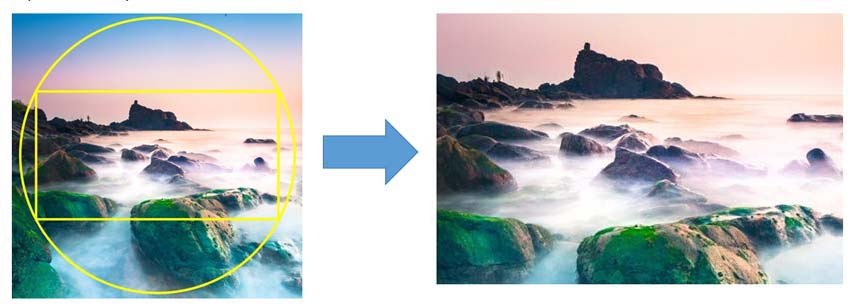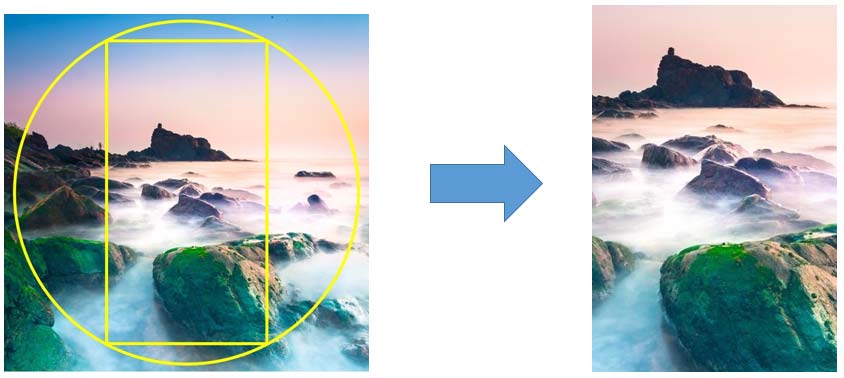Also see: Our upcoming “Sky, Earth & Water – Landscape Photography Workshop” in Gokarna, Karnataka, mentored by photographer Dinesh Maneer.
This article is written by photographer and our landscape photography mentor Dinesh Maneer.
I often get this question in my workshops: when to shoot portrait or landscape orientation when photographing seascapes, or landscapes in general. The answer is not easy as this decision should be made from your own inner sense of aesthetics. But we can list out some pointers that might help you make a decision.
Let’s take an example and discuss all the pointers to understand the approach for a given composition, and look at a few considerations.
In the image below, a composition with landscape orientation provide opportunity to include a lot of space to the right and left sides of the distant rock. This helps me include the people standing on left in the frame. So this brings a sense of story to the picture.
But when composed in portrait orientation, I can pack some more elements in the foreground and background, thus making an ideal seascape. Those green moss-covered rocks and a colorful sky makes a strong composition and a great impact.
So a choice can be based on emphasis on the subjects. Landscape orientation offers a wider view that helps provide a better context of the landscape. In portrait orientation, you get more space at the top and bottom. Now, you think which one suits depending on the scene happening in front of you.
With portrait orientation, you can get low/high and close to the objects in foreground, still keeping the background well in the frame. This is useful when you have interesting subjects in the foreground. In landscape orientation you can go wider regardless where you are standing (and if there are any interesting objects right in front of you) and it’s much more easier to compose than vertical.
Shooting in portrait mode is much more difficult compared to shooting in horizontal orientation. This is because of inconveniences in handling the tripod, difficulties in looking through viewfinder and greater light intensity difference from top to bottom of the frame, to name few. However, if you think it is worth making an image in portrait format, you should be willing to ignore these inconveniences. With practice, you can get better in shooting portrait formats.
Print magazines prefer vertical images, while landscape format looks great on most display devices. As we are progressively moving from print to digital devices, nowadays landscape format is more easier for consumption. But mobile phones are bringing portrait mode back again! Cameras are designed to shoot easier in landscape orientation and we often tend to stick to it. Remember to shoot a few portrait images without fail.
Also see: Our upcoming “Sky, Earth & Water – Landscape Photography Workshop” in Gokarna, Karnataka, mentored by photographer Dinesh Maneer.


